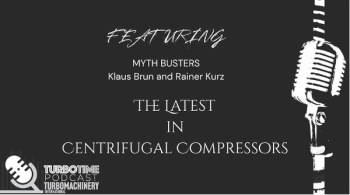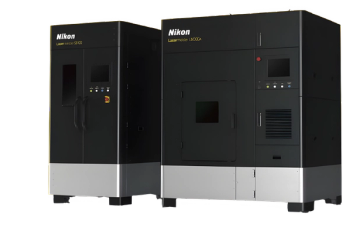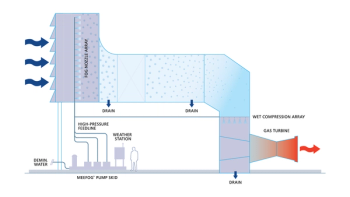
TurboTime Podcast: Designing Turbomachines - Part II
How accurate are advanced computational tools like CFD and FEA? Find out in part II of designing turbomachines with the Myth Busters.
In part II of the TuboTime episode on designing turbomachines, the Myth Busters, Klaus Brun and Rainer Kurz, discuss the accuracy of these design tools, which benchmark testing is still required, and current state-of-the-art tools.
TURBO: How accurate are these tools? Are the software limitations a part of the software, or are they human input issues?
Brun: It depends on the software, right? There are situations where you need to be fairly accurate. Most finite element analysis (FEA) and computational fluid dynamics (CFD) are reasonably accurate, depending on the input of your boundary conditions. You really need to consider what you're trying to accomplish. Structural FEA is more advanced than CFD. Additionally, the equations being solved are fundamentally more linear, and therefore, the expected results tend to be more precise. You can generally expect to be within a couple of percent. In contrast, with CFD, the equations, as Rainer mentioned earlier, the Navier-Stokes equations, are highly complex and nonlinear partial differential equations. These equations are difficult to solve, and you can end up with very inaccurate results because many approximations are made, especially regarding turbulence modeling and boundary layers. The fidelity of the model is essential since you can't delve down to a molecular level; there's a limit to the size at which you can operate before you must make turbulence assumptions and consider steady state versus transient conditions. There are numerous opportunities for error here, and those are some of the significant ones.
Rainer: The issue is fundamentally this: What problem are you trying to solve? If you ask a designer to create a new compressor stage that aligns with the experience level of that company's database, you can likely determine things like efficiency or head-making capability, particularly in terms of aerodynamics, probably within a few percent without ever testing it. However, if you are dealing with something for which there is no reference data—essentially operating in uncharted waters and relying solely on your code—the accuracy is significantly and dramatically lower than that.
Newsletter
Power your knowledge with the latest in turbine technology, engineering advances, and energy solutions—subscribe to Turbomachinery International today.





